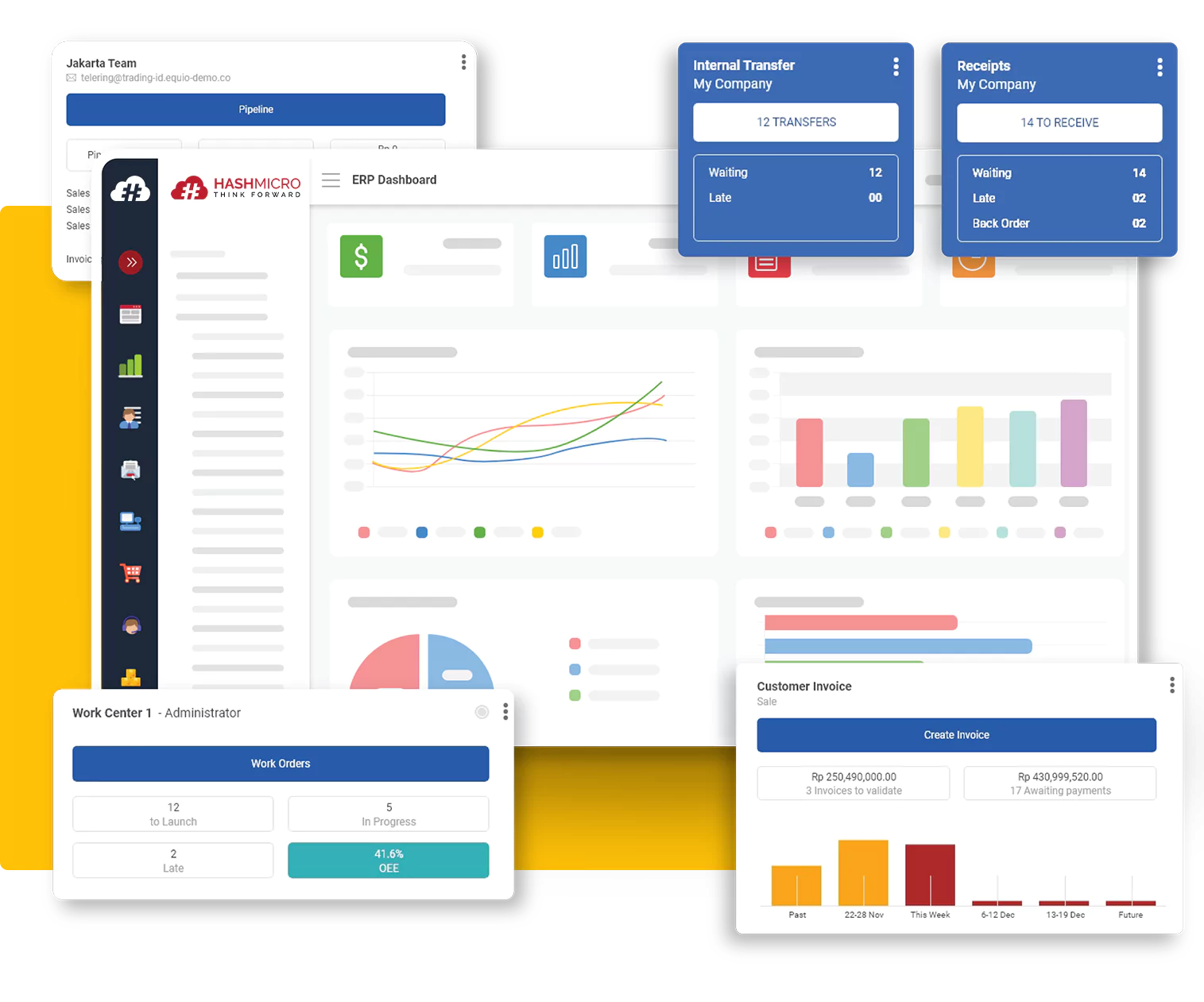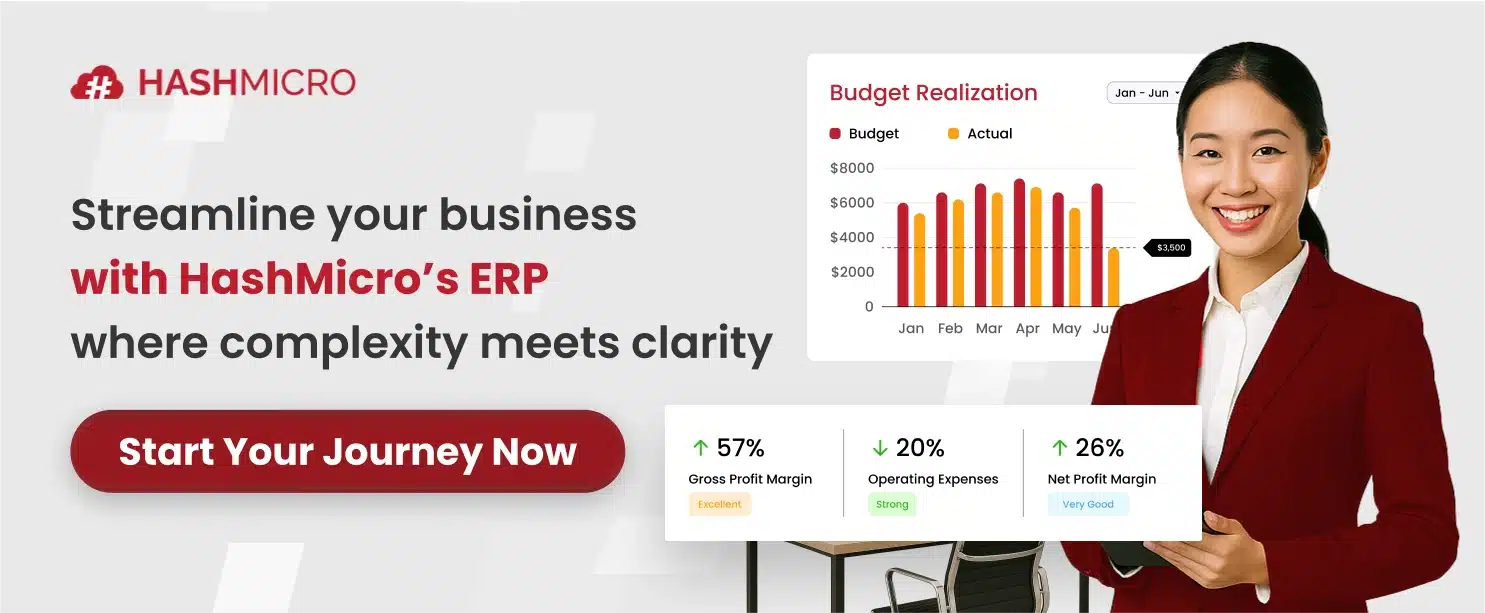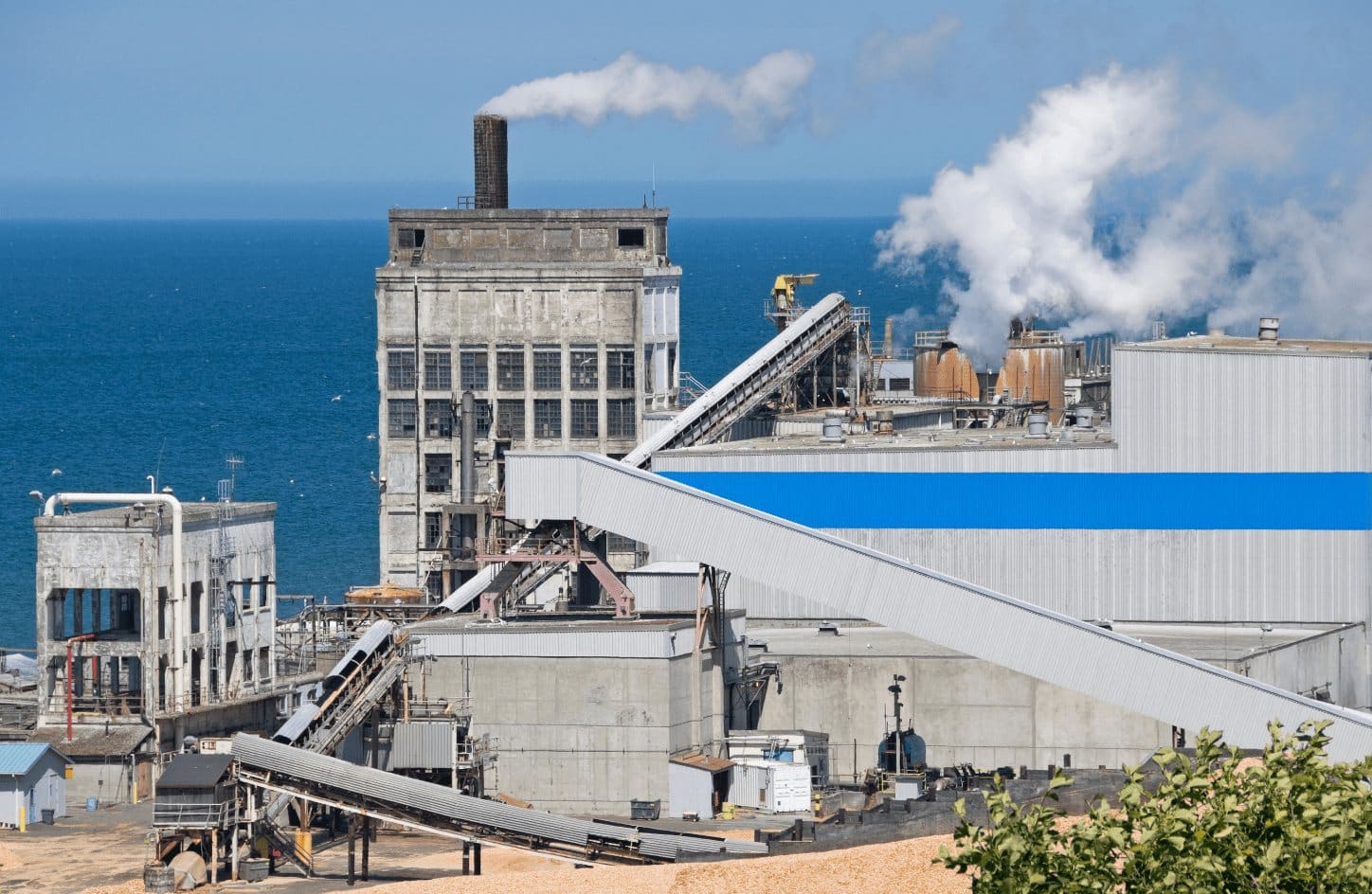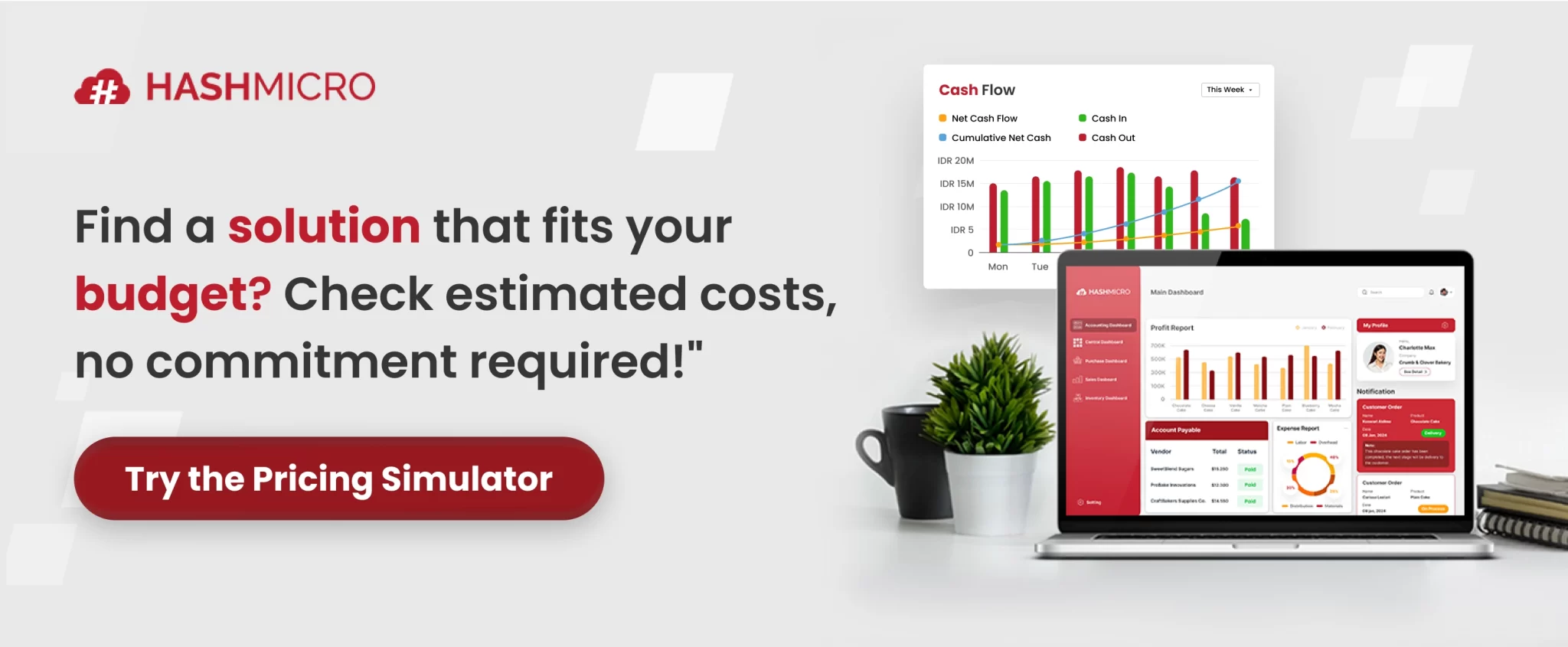When I first managed our paper factory, I quickly realized how complex operations were—from wood pulp production to finished products. That’s when I turned to the ERP System to streamline everything.
With a single database, the ERP integrates all operations, including inventory management, human resources, order processing, and customer relations, helping the entire factory run efficiently.
By optimizing processes and reducing errors, ERP software allows my business to handle multiple functions seamlessly, saving time and boosting overall productivity. Let’s explore this article to learn how to drive growth in your paper factory.

Key Takeaways
|
What Is an ERP System? (A Quick Refresher)
ERP is a business management solution that allows hardscape companies and other organizations to gather, store, manage, and analyze data from all their operational activities.
Its main functions include accounting, HR, procurement, project management, inventory, sales, and CRM. By centralizing information across departments, ERP provides a unified view of the business, supporting more informed strategic decisions.
Essential ERP Benefits to Accelerate Paper Manufacturing Growth

Implementing an ERP system in a paper factory brings numerous benefits. Here are the key advantages that can help your factory enhance operational efficiency and overall business performance:
- Detailed cost insights: Analyze product, customer, and production line profitability to improve quoting and order efficiency.
- Data access control: Ensure sensitive corporate information is protected through strict access permissions.
- Flexible production planning: Adjust schedules easily to meet customer service requirements while maintaining operational efficiency.
- Support for mixed manufacturing models: Manage both discrete and process manufacturing effectively within a single system.
- Microsoft Office integration: Seamlessly connect with Excel, Word, Outlook, and CRM for enhanced productivity.
- Advanced IoT capabilities: Use machine learning, Power BI, stream analytics, and HDInsight to strengthen operational insights and analytics.
10 Ways an ERP System Helps Your Paper Factory Achieve Faster Growth
1. Eliminate Inefficiencies
Basic administrative tasks consume a significant portion of your team’s time, ensuring data organization and smooth-running processes. While necessary, these labor-intensive activities rarely contribute directly to business growth.
As businesses grow, maintaining data across multiple locations becomes increasingly time-consuming. Searching for invoices or toggling between apps to gain a comprehensive view of operations can slow down decision-making and reduce efficiency.
A cloud-based ERP solution centralizes all business information in one location. From tracking clients, orders, products, and pricing to managing other processes, everything is accessible in one convenient platform.
2. Streamline Processes with Connected Supply Chains
An ERP system centralizes the majority of a business’s data, allowing authorized users to easily access, retrieve, and save the information they need. This improves accuracy and boosts productivity, with real-time syncing with the most current and relevant data.
Manual data entry or communication via email, phone, or in person carries a high risk of errors and miscommunication. Such inefficiencies can lead to data loss, the dissemination of incorrect information, increased costs, and a reduced growth potential.
By providing all necessary information in one centralized location, ERP accelerates the planning process. Decision-makers can focus on making informed choices quickly, reducing delays and enabling businesses to operate with greater confidence and agility.
3. Generate More Leads
Lead generation relies on producing information and services that people find valuable and consume, as opposed to traditional marketing, which requires your organization to advertise its products.
This effectively cuts costs, but it also makes it difficult to coordinate across multiple social networking sites, email marketing, and other channels. By automating the majority of it, ERP implementation takes care of them.
It relieves you of the frustration of losing business due to poor lead handling. The qualities of a healthy lead are as follows:
- An expansive budget should be stable in terms of funds.
- The actual decision maker is involved.
- Your services meet the needs of the customer
- Purchase soon
4. Offer Exceptional Service
Enterprise resource planning systems are comprehensive, integrated platforms that can be used on-premises or in the cloud to manage all aspects of a distribution- or production-based company, including a paper factory.
ERP systems serve all facets of financial administration, human resources, supply chain management, and manufacturing. By monitoring all aspects of manufacturing, logistics, and finances, ERP systems will also offer transparency into the entire business process.
Multiple departments can utilize these integrated systems, which serve as the organization’s core hub for end-to-end processes and data. ERP systems and software provide several capabilities for large, medium-sized, and small organizations.
5. Reduce Technology Costs
ERP significantly enhances accuracy by automating data entry, facilitating more effective planning and improving cost management. With comprehensive software solutions, all data in a paper factory is integrated into a single system, allowing precise tracking of operations.
Traditional IT systems require significant time and money for maintenance, licensing, updates, and training, especially when managing multiple disparate programs. These methods often limit scalability in both cost and efficiency.
ERP eliminates the need for many separate departmental systems, reducing complexity and expenses as the business grows. It also minimizes workflow interruptions caused by software or hardware updates, patches, or replacements.
6. Optimize Inventory
The manufacturing industry primarily drives ERP adoption, but many types of businesses can also benefit from its efficiencies. Gaining a more thorough understanding of your supply chain and the breadth of your inventory is one way to achieve this.
An ERP can assist you in matching your product inventory with the present and future demands of your customers. Whether you need insight into ordering, replenishing, or reviewing supply needs.
With the use of a good ERP, you may reduce product shortages, proactively manage supply chain gaps, and better budget for inventory levels while reducing wasteful spending and purchases for things that might stay in long-term storage facilities.
7. Get Actionable Insights
Businesses with multiple entities, locations, currencies, languages, and systems often require software adaptations, which can complicate implementation and may require a phased rollout.
Effective project management that accounts for these factors and understands the software’s flexibility is essential to ensure the implementation progresses according to business needs. The goal is to move efficiently by optimizing time, budget, and resources.
Without a clear strategy, it can be not eas to prioritize tasks and maintain direction. Defining your organization’s success and collaborating with your implementation partner ensures the ERP process aligns with your objectives and delivers actionable insights.
8. Invest in Technology
The rapid growth of the technology sector over the past two decades is transforming our cultural and business landscapes. Factories of all types, including paper factories, are evolving with these technological breakthroughs.
Adopting modern information technology can help reduce costs and boost profitability. Staying up-to-date with the latest advancements in communications and IT enables paper factories to select solutions that best fit their operations.
Integrating cloud applications with existing ERP modules provides access to new technologies and evolving user paradigms. These complementary systems deliver immediate business value.
9. Reduce Material Waste
When forecasting is inaccurate, production, planning, and distribution become inefficient, resulting in inventory waste and the storage of excess components, raw materials, or finished products.
An ERP system helps reduce these inefficiencies by allowing businesses to order materials as needed, produce on schedule, and ship products promptly. ERP ensures operations run smoothly and resources are used effectively.
By centralizing all necessary data, ERP makes it easier to analyze performance and identify areas of waste. Businesses can pinpoint inefficiencies and implement targeted changes, ultimately saving time, money, and effort while protecting their bottom line.
Also Read: How to Effectively Reduce Waste in Manufacturing
10. Conduct Preventive Maintenance
Preventive maintenance is a systematic approach that anticipates and prevents equipment failures before they occur. This proactive strategy helps ensure that machinery and assets operate smoothly, reducing the risk of costly downtime.
There are several types of preventive maintenance, including time-based, condition-based, performance-based, failure-finding, and predictive maintenance. Facilities staff conduct repairs to ensure the facility operates optimally.
Integrating a maintenance management platform into ERP software can further enhance preventive maintenance by providing accurate predictive analytics. This allows factories to optimize schedules and maintain operational efficiency.
Here is a table summary that discusses 10 ways an ERP system can help your paper factory achieve faster growth:
| 10 Key Ways an ERP System Can Help Your Paper Factory Achieve Faster Growth | Description |
|---|---|
| Eliminate Inefficiencies | Cloud-based ERP streamlines operations by centralizing data, reducing the time spent on administrative tasks and pricing on a single platform. |
| Streamline processes with a connected supply chain | ERP centralizes business data, ensuring accuracy, real-time access, and faster decision-making. It minimizes errors from manual processes and boosts productivity with streamlined information flow. |
| Generate more leads | ERP automates multi-channel efforts, streamlines lead handling, and ensures that prospects meet key criteria, such as budget and readiness to make a purchase. |
| Offer exceptional service | ERP systems are integrated platforms that manage finance, HR, supply chain, and manufacturing, providing transparency and a central hub for all business processes. |
| Reduce technology costs | ERP streamlines operations by automating data entry, centralizing information, cutting IT costs, and reducing system complexity. |
| Optimize inventory | ERP helps businesses optimize supply chain and inventory management by aligning stock with demand, reducing shortages, and improving budgeting efficiency. |
| Get actionable insights | Successful ERP implementation for multi-entity businesses requires strategic project management and collaboration with vendors to ensure efficiency and actionable insights. |
| Invest in technology | Technology advancements drive paper factories to adopt IT and cloud-based ERP solutions, reducing costs and delivering immediate business value. |
| Reduce material waste | ERP minimizes inefficiencies by aligning production, inventory, and distribution, enabling businesses to reduce waste and safeguard profitability. |
| Conduct preventive maintenance | Preventive maintenance with ERP predicts equipment issues, minimizing downtime and optimizing factory efficiency. |
Also Read: Total Productive Maintenance to Enhance Manufacture Business Performance
Streamline Your Paper Factory Growth with HashMicro ERP System

HashMicro ERP System is an all-in-one solution for paper factories in Singapore that aims to streamline operations and paper production, while enhancing overall business performance.
Its intuitive interface and AI integration help factory teams oversee processes from raw material procurement to finished product distribution, all connected seamlessly with other ERP modules such as accounting, inventory, and procurement.
HashMicro ERP system offers advanced features designed to optimize productivity and operational control:
- Real-Time Production Monitoring: Track manufacturing activities and machine performance to ensure accuracy and efficiency.
- Mobile Access: Access paper production data and manage operations on the go via Android & iOS applications.
- KPI Tracking: Set performance targets and monitor team efficiency across various operational tasks.
- Data Integration: Connect information from suppliers, logistics, and digital platforms for data-driven decision-making.
- Operational Insights: Compare planned production with actual performance to evaluate efficiency and identify areas for improvement.
- Top Product Analysis: Identify high-performing paper products and optimize inventory and production schedules accordingly.
Conclusion
Due to these advantages, ERP software remains a top technological priority for the majority of manufacturing firms today, including paper factories. To attract and keep customers, there are a few things businesses of all sizes and types must do.
HashMicro ERP System can be the right solution for your business. With key features such as streamlined inventory management, sales & marketing integration, and purchase request control, Hash Core ERP will help your paper factory become even more advanced than before.
Try the free demo and see the benefits your company gains from using Hash Core ERP by HashMicro.

Frequently Asked Questions
-
What is a paper factory called?
A paper mill is a factory dedicated to producing paper from vegetable fibers, such as wood pulp, old rags, and other ingredients.
-
How does a paper factory work?
Typical mechanized paper production involves two main processes: the treatment of raw materials, which includes converting chips into pulp, washing and bleaching, refining, beating, sizing, and coloring the fibers, and later forming a paper sheet in a Fourdrinier machine.
-
How profitable is the paper industry?
North American pulp and paper companies’ profit margins dipped to 4.2% in the first quarter of 2023, which was significantly lower than the 10% margin in the first quarter of 2022 and the 8% margin in the first quarter of 2021, when pulp and paper prices reached their highest levels.














